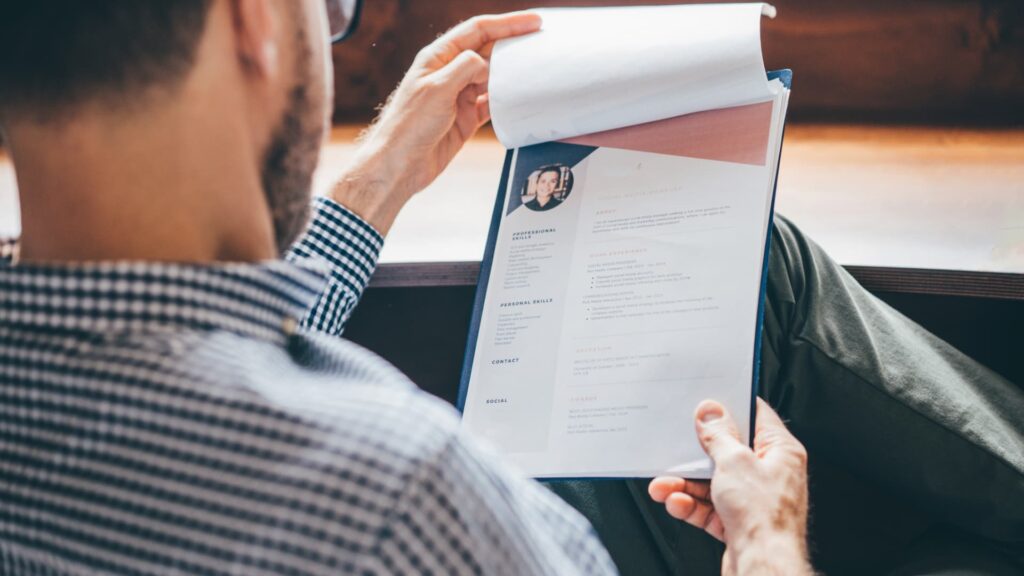AI headshots are becoming popular on LinkedIn and professional portfolios as job seekers look for affordable profile photos to give them an edge.
Almost all first impressions are made through screens, so a clean, attractive photo is just as important as a strong resume. And in a competitive job market, a good headshot can make a big difference. However, professional photography has long been a financial barrier for many job seekers, as the average start-up cost for a professional headshot in the United States is several hundred dollars.
Job seekers are now using faster and cheaper AI tools instead of expensive studio sessions.
“When I was at Yale, a 15-minute session for students was $200,” says Melanie Huang, director of growth at Plush, an AI-powered online search platform for personalized shopping. “It was really expensive. It was a process of getting the photos back, rendering them, figuring out which ones looked best, and sending them back to the photographer for editing.”
This frustration has fueled the explosion of AI headshot tools such as InstaHeadshots, PhotoPacksAI, HeadshotPro, and Aragon AI. These services start at less than $50 and promise professional images in minutes. Users can simply upload a selfie, choose a background, and receive dozens of selfies, no photographer required.
“After we changed our LinkedIn photo, the amount of inbound calls we received from companies skyrocketed,” Huang said. “Messages from businesses have increased three to four times.”
Design company Canva recently launched its own AI headshot feature. Its purpose is to provide users with an easy way to create realistic headshots that can be retouched and restyled.
According to Canva’s recent job market research report, 88% of job seekers believe a sophisticated digital presence influences hiring decisions, a 45% increase year-over-year. This is in line with a general increase in the use of AI as part of the application and hiring process, with 90% of recruiters saying they have used AI to assist in the hiring process, and 96% of job seekers who used AI during the application process saying they received a callback.
Danny Wu, Canva’s head of AI products, said the goal is not to replace real photos, but to make high-quality images available to everyone, regardless of budget or location. When a user uploads an image, Canva uses AI to adjust or change the background, place something in a different location, style it, and more. “This is a more accessible way to get professional and unique headshots,” Wu said.
Risks and questions regarding the credibility of HR recruiters
Anyone with a cell phone can take a LinkedIn-enabled headshot, but the rapid adoption of this technology is raising new questions about ethics and trust. Many candidates fear looking fake or deceptive, and recruiters are turning to AI-generated portraits that look overly smooth or stylized, with authenticity being paramount.
“Using AI headshots is recognized as risky,” said Sam DeMase, career expert at ZipRecruiter. “Recruiters will accept the job, but if the AI-generated headshot is bad, most recruiters will be turned off,” Demers said. “Poor AI-generated headshots can be easily recognized and deemed inauthentic, hurting a candidate’s chances of winning.”
But recruiters struggle to tell if a headshot is generated by AI, and the technology will only continue to improve. “It’s becoming increasingly difficult to tell whether a headshot is enhanced or generated by AI,” Demers added.
Chris Bora, founder and lead AI architect at Bora Labs and former Meta engineer, said he built his own headshot generator, Nova Headshot, after being disappointed with existing options. “Some of them made me look taller and thinner,” Bora said. “Everything else made me look bright, so it wasn’t really me,” he said. “You no longer need to spend thousands of dollars to look professional. All you need is the tools to look like you on your best day. With Nova, it takes less than 10 minutes,” Bora said.
AI headshot user Amber Collins said she still feels anxious, especially since not all apps work properly. “There are a lot of malicious apps out there,” Collins said. “Seven fingers are gone, half the necklace is missing from my neck. I feel guilty about using AI. There’s a bias. I’d 100% want to actually get a headshot done,” Collins said.
But in the end, she says, the benefits outweighed the risks. “In this economy, you have to be careful where you spend your money. You don’t have to overexpose your face, but there’s value to me in getting some really good, solid, professional-looking headshots,” Collins said.
Wu said the goal for job seekers seeking headshots should be to use Canva’s tools to balance realism and creativity without losing their identity.
The tension between innovation and accessibility, on the one hand, and trustworthiness, on the other, will continue.
A LinkedIn spokesperson told CNBC that while the platform can use tools such as AI to enhance and create profile photos, “your photos need to reflect who you are.”
“Profile photos that do not comply with our user agreement or professional community policies may be removed,” a LinkedIn spokesperson said.
DeMase noted that many job seekers remain hesitant about using AI headshots. “A headshot is one of the few places you can inject some humanity into your job search,” he says.
But now that job seekers can offer the look of having access to the same studio lights, cameras, and editorial teams as the pros, this trend shows no signs of stopping.
According to a recent study, Gen Z and Millennials have the highest rates of headshot use among job seekers. And while recruiters may still say they prefer real photos, AI headshots will become increasingly difficult to find and less likely to even be reviewed by a human at the beginning of the application process. A recent study by HR trade association SHRM found that 66% of HR professionals use AI to write job descriptions, and 44% use the technology to review or screen applicant resumes.


